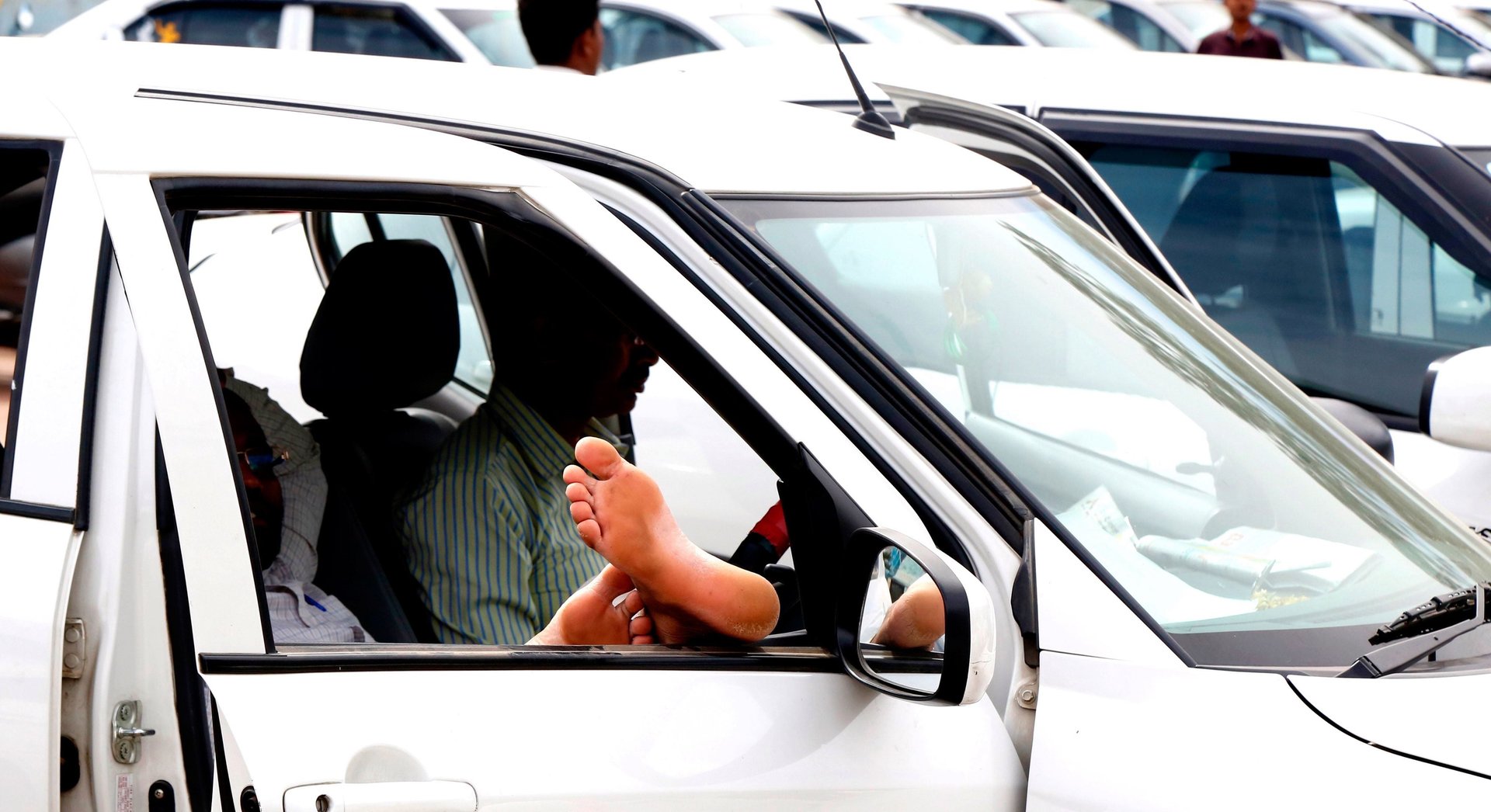Panic buttons won’t fix Ola and Uber’s sexual-assault problem
Vetting of drivers, panic buttons on phones, customer feedback—they’ve tried it all.


Vetting of drivers, panic buttons on phones, customer feedback—they’ve tried it all.
Yet, another woman customer of an online ride-hailing service in India was sexually assaulted by her cabbie.
On June 01, a 26-year-old architect booked an early morning ride to Bengaluru airport with Ola. Just before reaching the destination at around 2am, the driver took a detour, claiming it was a faster route. He then stopped the vehicle at a secluded spot, allegedly molested the woman, and forced her to strip for photos.
The survivor reportedly escaped by offering to not report the incident—which she did anyway. The driver was arrested within hours.
Ola’s response was the usual. “We have zero tolerance for such incidents and the driver has been blacklisted from the platform as an immediate action upon receiving the complaint,” a spokesperson told Quartz.
For years now, both Ola and its American rival, Uber, have repeatedly condemned such crimes, helped the police in probes, and weeded out the culprits. But nothing seems to work as the crimes recur with alarming frequency.
A double-edged sword
Although app-based taxi aggregators have improved woman commuters’ convenience in a country with abysmal public transport, their safety record remains patchy.
The Bengaluru case is only one among the many reported since the December 2014 rape by an Uber driver sparked a furore across urban India.
Over the years, both Ola and Uber say that they’ve deployed several measures, including:
Ola
- Background verification of all drivers, including e-verification using Aadhaar
- Emergency button in the app that alerts a safety response team
- A feedback mechanism for passengers to rate drivers based on their behaviour and driving skills
- Emergency contact feature to share details of a ride with five of the commuter’s friends and relatives
Uber
- Real-time ID checking feature where drivers are periodically asked to share selfies with Uber. This ensures that the driver behind the wheel matches the ride-hailing app’s records
- The app’s “share your ETA” feature lets passengers’ kin follow the cab route
- Emergency button connects with the local police and Uber’s 24×7 incident response team
- Anonymous rating and feedback for a driver
The gaps
These measures, though, have failed to be particularly effective, in part due to shoddy implementation.
“There has to be some lacuna in the system that allowed the crime to happen,” Seemanth Kumar Singh, additional commissioner of police (east), Bengaluru City, told Quartz.
For instance, according to Singh, the police had verified the antecedents of the driver involved in the most recent Bengaluru incident. But the driver didn’t know that he had been vetted and his details were logged with the authorities, which may have made him believe he could escape, Singh noted.
“The route of the vehicle was changed mid-way during the ride. The company should be able to detect such a discrepancy and get an alert about it,” he added. “Companies should do random checks on their drivers about whether they are following the right route or taking detours to ensure such things don’t repeat.”
In recent years, the number of cabs on Indian roads has increased manifold as Ola, Uber, and others have emerged as lucrative employment avenues for young men from lower income groups. “Most of the new young drivers come from a patriarchal mindset. Hence, they need thorough gender sensitisation. It helps to inform the drivers about dos and don’ts,” said Amitabh Kumar, head of media and communications at the Centre for Social Research, a Delhi-based women’s advocacy group.
Some also see the need for a stronger justice system.
“Often perpetrators assume they will be able to avoid prosecution. And in many cases, they do get away with their crime because the survivors do not want to go through a process of dealing with the police, a long trial, the likely stigma,” said Meenakshi Ganguly, the south Asia director of Human Rights Watch, an international non-government organisation.
But Gopal B Hosur, a retired inspector general of police, said there’s only so much that technology can do: “One must understand that these companies are also trying to avoid such incidents because they don’t want a bad reputation.”